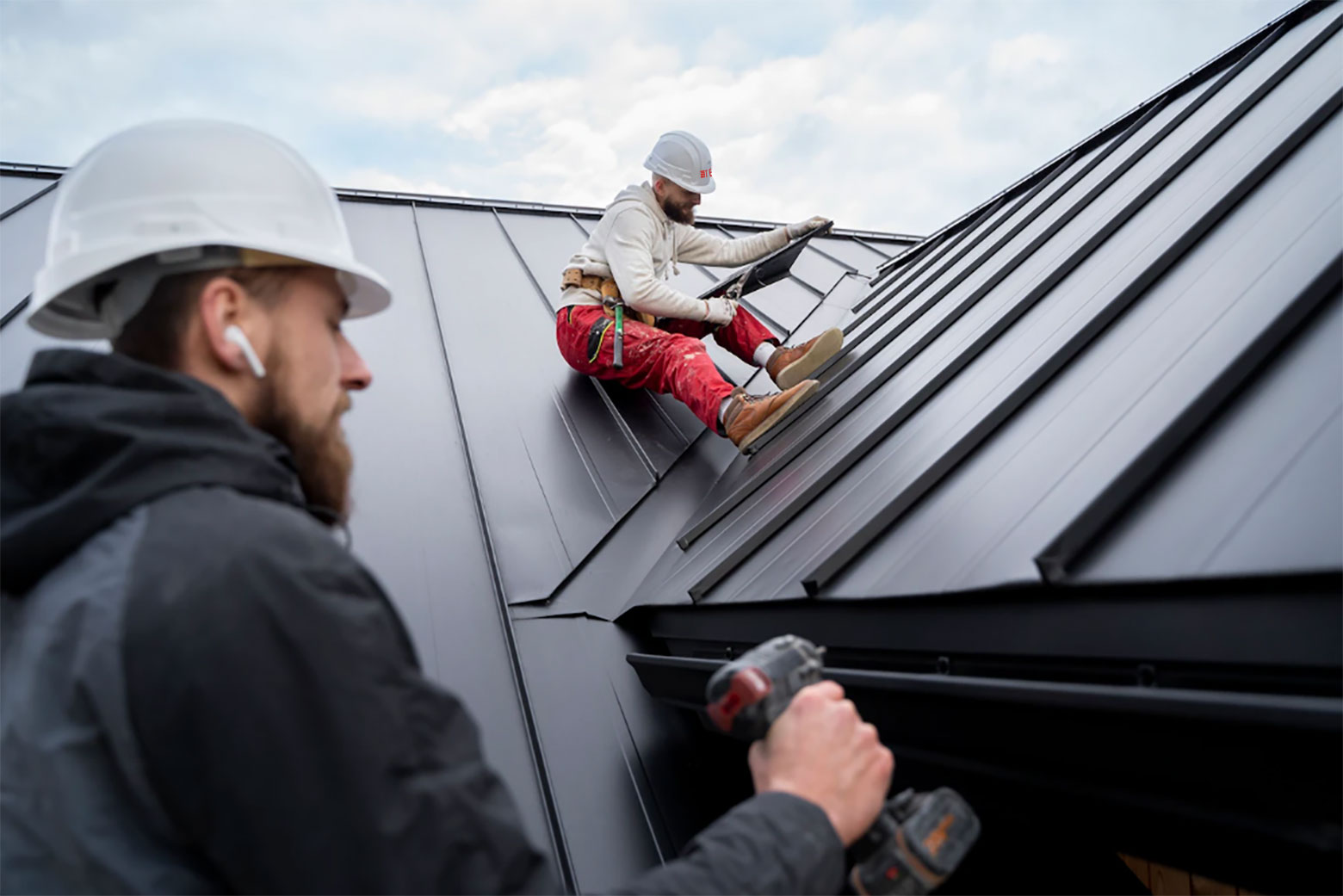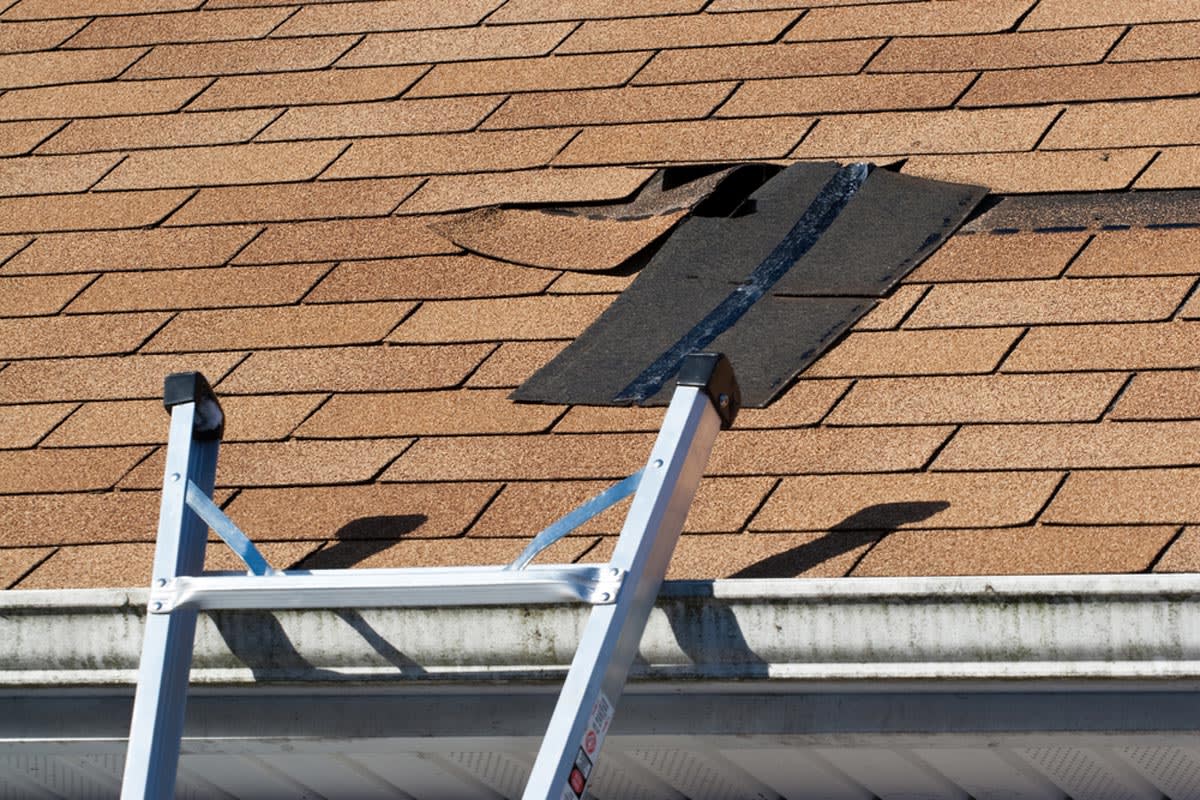Roofers Oahu: Professional Roof Installations and Repair Works
Roofers Oahu: Professional Roof Installations and Repair Works
Blog Article
A House owner's Overview to Types of Roofs: Selecting the Right Style for Your Requirements

Popular Roof Covering Styles
When it concerns choosing a roofing style, house owners commonly evaluate their options very carefully to make certain both visual appeal and performance. Among one of the most preferred styles are the gable, hip, and level roof coverings, each offering distinct benefits and visual qualities.
Gable roofings, characterized by their triangular form, are preferred for their basic design and reliable water drain. This style is particularly fit for regions with heavy rains or snow, as it minimizes the danger of water merging.
Hip roofing systems, which incline on all 4 sides, supply additional security and durability, making them an excellent selection for locations prone to high winds. Their building complexity enables better layout convenience and can improve the total curb allure of a home.
Flat roofing systems provide a modern-day visual and make the most of useful outside room, making them prominent for urban setups. While they need even more maintenance to avoid water accumulation, their smooth look can complement contemporary design.
Eventually, the option of roof covering design must reflect the property owner's personal taste while taking into consideration aspects such as neighborhood climate, architectural style, and prospective resale worth. Each style adds distinctively to a home's overall personality and performance.

Material Options
Selecting the ideal roof covering product is equally as crucial as choosing the ideal style, as it dramatically affects the roofing system's longevity, upkeep requirements, and total aesthetic. roofers oahu. Homeowners have a selection of options to consider, each with one-of-a-kind advantages and downsides


Metal roofing gives remarkable durability and long life, commonly going beyond 50 years, while likewise being resistant and light-weight to fire and rot. Metal roof coverings can be more expensive upfront.
Clay and concrete ceramic tiles supply a traditional appearance and outstanding life expectancy however call for a durable framework as a result of their weight. These products are resistant and very sturdy to extreme climate condition. Wood drinks supply a rustic visual however necessitate regular upkeep to avoid rot and insect damage.
Last but not least, artificial roof covering materials, such as rubber or plastic compounds, simulate the appearance of traditional materials while being low-maintenance and light-weight. Ultimately, the selection of roof covering material must line up with the house owner's budget plan, preferred lifespan, and maintenance preferences, ensuring a suitable match for their specific needs.
Energy Efficiency Considerations
Power performance plays an important function in the total performance of a roof system, influencing both environmental sustainability and property owner utility expenses. When choosing a roof, it is important to consider products and styles that boost energy efficiency. For instance, reflective roofing products, commonly referred to as "amazing roofing systems," can dramatically lower heat absorption, decreasing interior temperatures and lessening the need for cooling.
In addition, the roofing's shade and slope can influence its energy efficiency. Lighter colors normally reflect extra sunshine, while steeply pitched roof coverings help with far better air movement, minimizing warm build-up - roofers oahu. Insulation also plays a vital duty; a well-insulated roof covering can prevent heat loss in wintertime and keep insides cooler page in summertime, hence improving energy cost savings
Additionally, integrating energy-efficient roof covering choices with photovoltaic panels can further reduce power expenses and reliance on nonrenewable best site resources. Homeowners ought to likewise think about local environment problems when selecting roofing materials and designs, as these aspects straight influence energy consumption.
Upkeep Needs
The long life and efficiency of a roof are significantly affected by the maintenance requirements connected with its design and products. Various roofing types require varying levels of upkeep, which can affect both the home owner's time and budget plan.
Routine cleansing of rain gutters is essential to prevent water damage and prolong the roofing's life expectancy. These roofs likewise benefit from cleaning to maintain aesthetic appeal and capability.
Floor tile roofing systems, known for their long life, demand less frequent maintenance but need cautious evaluation and substitute of damaged tiles. Flat roofings, although offering modern visual appeals, often need even more attention; they need normal evaluation for pooling water and particles elimination to avoid leaks.
Inevitably, comprehending the upkeep demands connected with different roof covering designs enables home owners to make informed decisions, ensuring the picked roof covering system aligns with their way of living and dedication to upkeep. Focusing on maintenance will improve the roofing system's performance and prolong its life span, giving assurance for many years to come.
Influence on Resale Value
When considering a brand-new roofing design, house owners must identify that the choice can substantially affect the residential or commercial property's resale worth. A well-chosen roofing system not just enhances visual allure but likewise indicates to prospective purchasers that the home is well-kept and structurally sound. Different roof covering materials and styles carry differing levels of worth in the realty market.
For circumstances, asphalt tiles are popular because of their affordability and large range of colors, usually appealing to budget-conscious customers. Conversely, a metal roof, while a lot more expensive in advance, provides longevity and energy effectiveness, which can attract buyers looking for low upkeep and sustainability. In addition, one-of-a-kind designs such as slate or tile can add a touch of deluxe, potentially boosting the residential property's value in upscale markets.
Regional preferences additionally play an important function; homes in locations with heavy snowfall might take advantage of outstanding pitched roof coverings, while coastal areas might favor long lasting materials resistant to saltwater deterioration (roofers oahu). Inevitably, home owners need to take into consideration both visual charm and sensible advantages when picking a roof. A thoughtful option guarantees that the financial investment not just fulfills individual demands however additionally boosts the property's marketability and resale capacity
Final Thought
In verdict, selecting the ideal roof style requires a careful analysis of different aspects, including local environment, architectural design, and upkeep demands. Each roof alternative, whether it be gable, hip, or level, possesses unique advantages and drawbacks that impact energy effectiveness and possible resale value. Inevitably, an educated choice Our site concerning roofing system selection can enhance the aesthetic appeal, performance, and long life of a home, ensuring it continues to be a valuable possession for several years to come.
Picking the appropriate roof design for your home is an essential decision that can substantially influence both aesthetic appeals and functionality. While gable roofs succeed in water drainage, hip roof coverings might supply higher durability versus wind.When thinking about a new roof design, house owners must identify that the option can considerably affect the home's resale worth. Inevitably, homeowners should take into consideration both aesthetic charm and useful benefits when picking a roof.In verdict, choosing the suitable roof style necessitates a cautious evaluation of different elements, including regional environment, building style, and upkeep needs.
Report this page